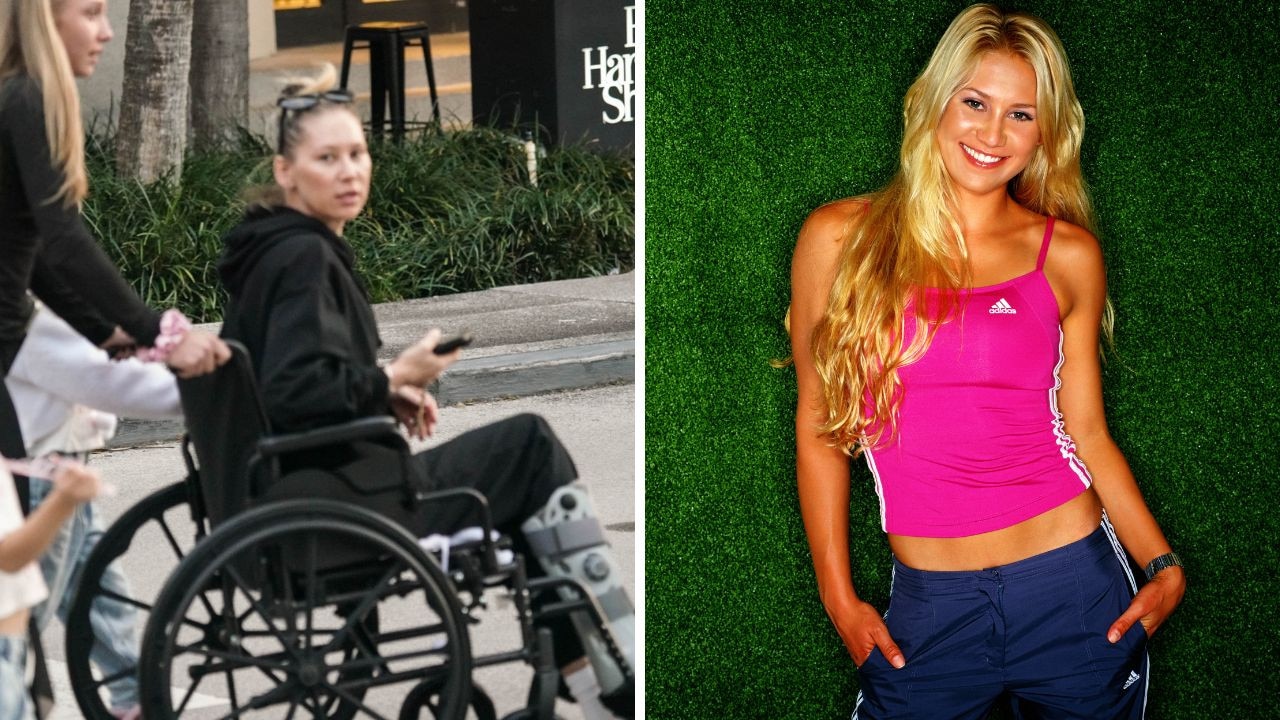Controversial Nike Vaporfly running shoes could be banned by World Athletics
They’re the brightly coloured shoes flying off the shelves. But, there are calls to ban them because they are just too good.
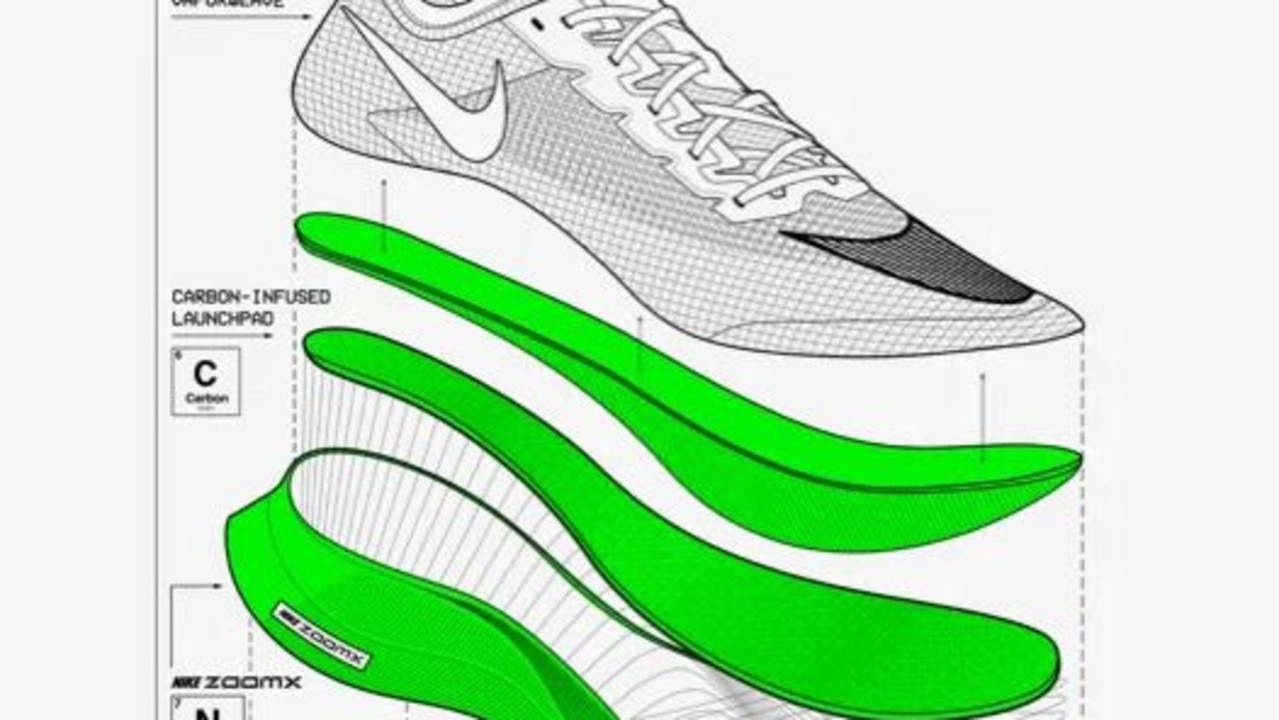
They look just like another pair of running shoes. Maybe the bright pink and yellow colours are on the garish side, but they don’t appear out of the ordinary.
Yet, under the skin, Nike’s $320 Vaporfly sneakers are so advanced, athletics’ world governing body is considering banning them.
They have been likened to a “trampoline” or “spring” that means athletes of equal physical prowess not wearing a pair are destined to lose.
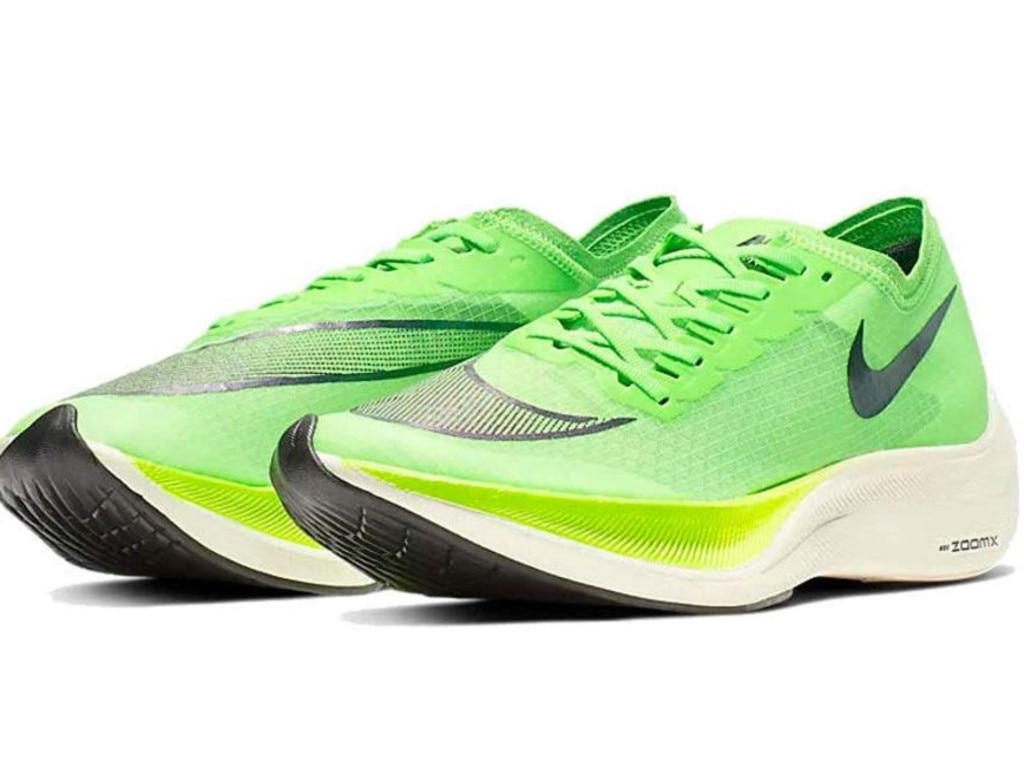
The stoush has raised memories of the “shark suit” storm that saw scores of records broken in swimming at the 2008 Olympics.
Nike’s Vaporfly shoes are embroiled in a similar controversy with running records sent tumbling by those donning them.
In last year’s Chicago Marathon, Kenyan sprinter Brigid Kosgei crossed the line in 2hr 14mins 04 secs while wearing an adapted pair of the Vaporfly Next% variant, a world record that sliced a whopping 81 seconds off the previous holder’s time.
A year before, fellow Kenyan Eliud Kipchoge broke the men’s world record in Berlin, winning the marathon with a time of 2hr 01min 39 sec. Again, he was wearing Vaporfly.
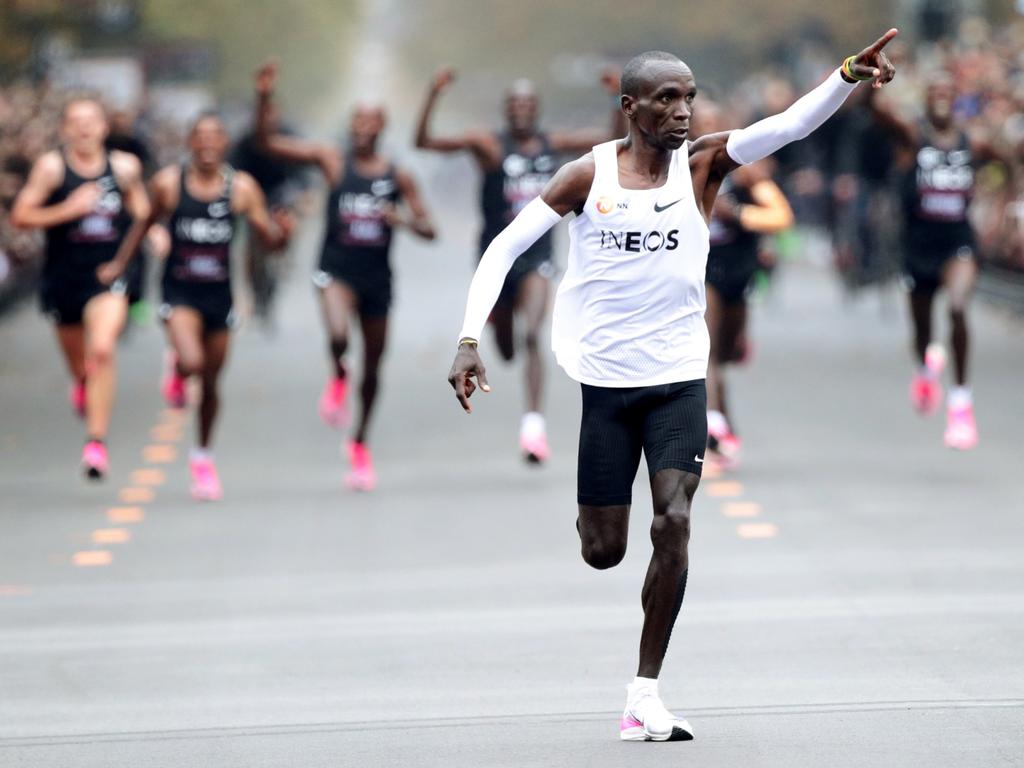
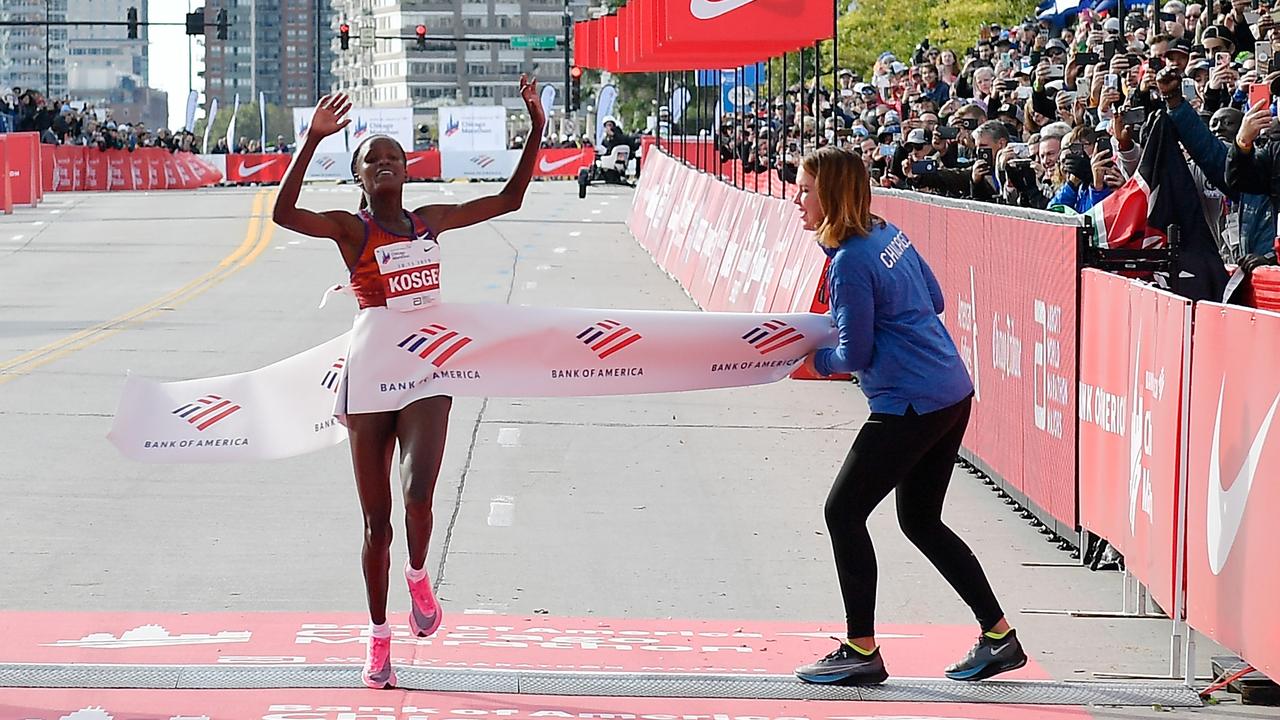
A decision is soon set to be made by World Athletics as to whether the sneakers should be removed from the feet of competitors. That could mean they would be banned from the upcoming Tokyo Olympics.
Vaporfly shoes aren’t new; they’ve been around since 2016. But their popularity has soared along with the successes of those wearing them.
According to The Guardian, 31 of the 36 podium positions in last year’s major marathons were achieved by people wearing Nike Vaporfly.
Nike has claimed the shoes have a 4 per cent energy saving over standard trainers, which can result in people increasing their running times.
Far from trying to downplay the controversy, the world’s largest athletic footwear manufacturer has capitalised on it. Nike’s website talks of Vaporfly as the “fastest shoe we’ve ever made” due to a “built-in secret weapon”.
Ignoring the definition of “secret”, Nike goes on to explain the technology as a “full-length, carbon fibre plate underfoot that provides a propulsive sensation to help you push the pace”.
The plate is combined with “ZoomX” foam, which stores the energy when the foot is depressed and then returns much of it back to the runner propelling the foot back up.
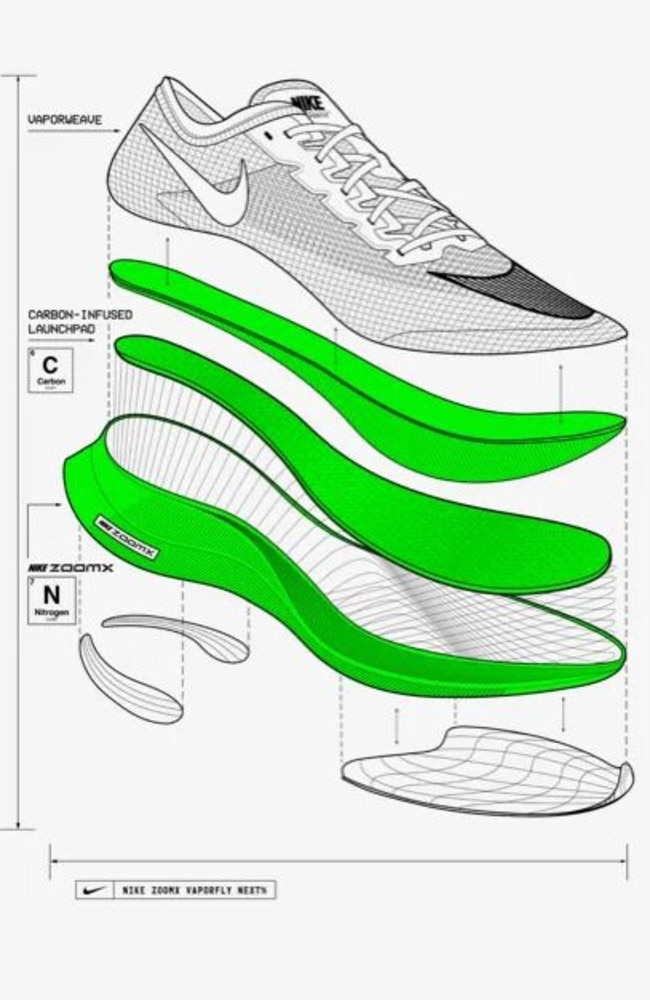
Nike even calls this a “launch pad”, while others have labelled it a “trampoline” effect.
“For two athletes of equal ability on race day, the one with the shoes is going to beat the one without the shoes, human movement researcher Geoff Burns told Business Insider.
Elite US runner Ryan Hall, the husband of renowned American marathon runner Sara Hall, who uses shoes from rival Asics, has made his views on the Vaporfly known: “It is no longer a shoe, it’s a spring,” he said.
The high price tag doesn’t necessarily translate into durability. For the serious marathon runner, a pair of Vaporfly shoes may last only a race or so.
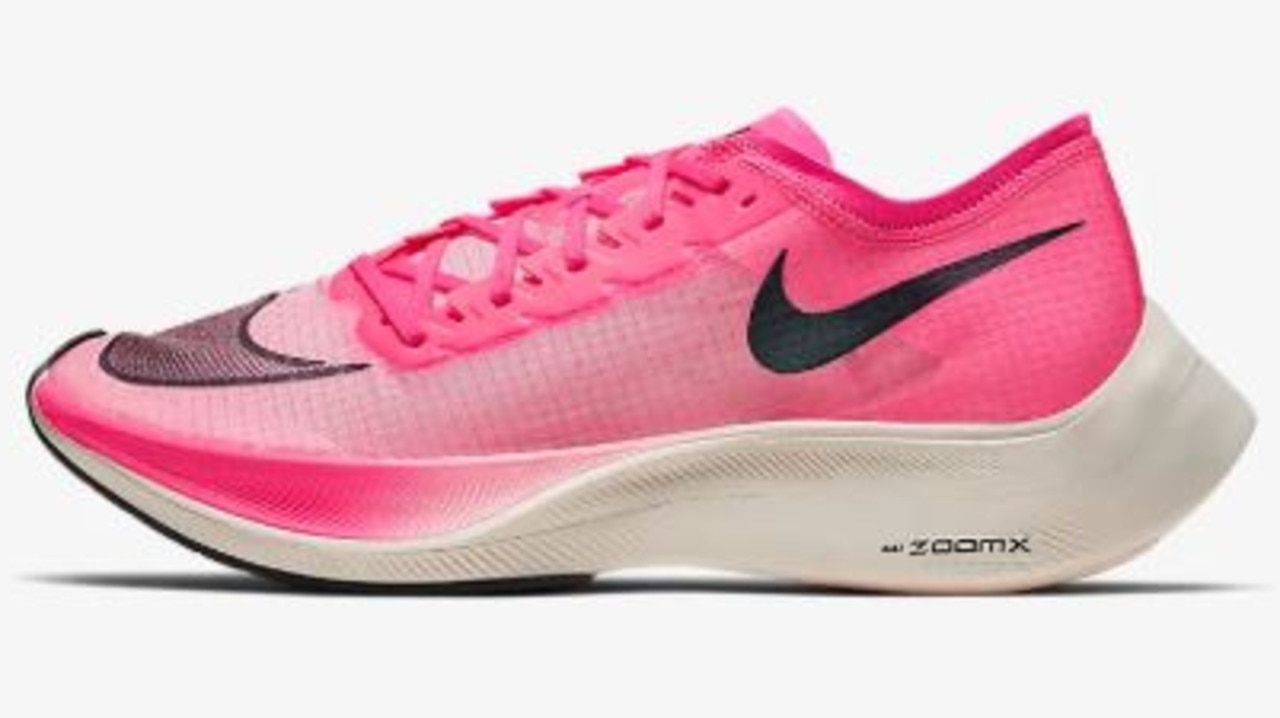
Both Kosgei and Kipchoge are said to have worn specially adapted versions of the Vaporfly, not available to buy, that could contain extra plates for more propulsion.
There’s nothing new with advances in footwear technology and construction. But what World Athletics has to decide is whether the new Nikes confer an “unfair advantage” on athletes.
Nike’s competitors believe that to be the case.
Britain’s The Times has quoted one rival shoe company executive as saying “new parameters” need to be introduced to regulate sneakers.
“Track and field needs to bring in the kind of rules that we saw introduced in other sports, like swimming. But it has taken too long to get to this point, and it makes it very difficult for designers to produce a new shoe in time for the Olympics in Tokyo.
“That means Nike athletes could still have an advantage.”
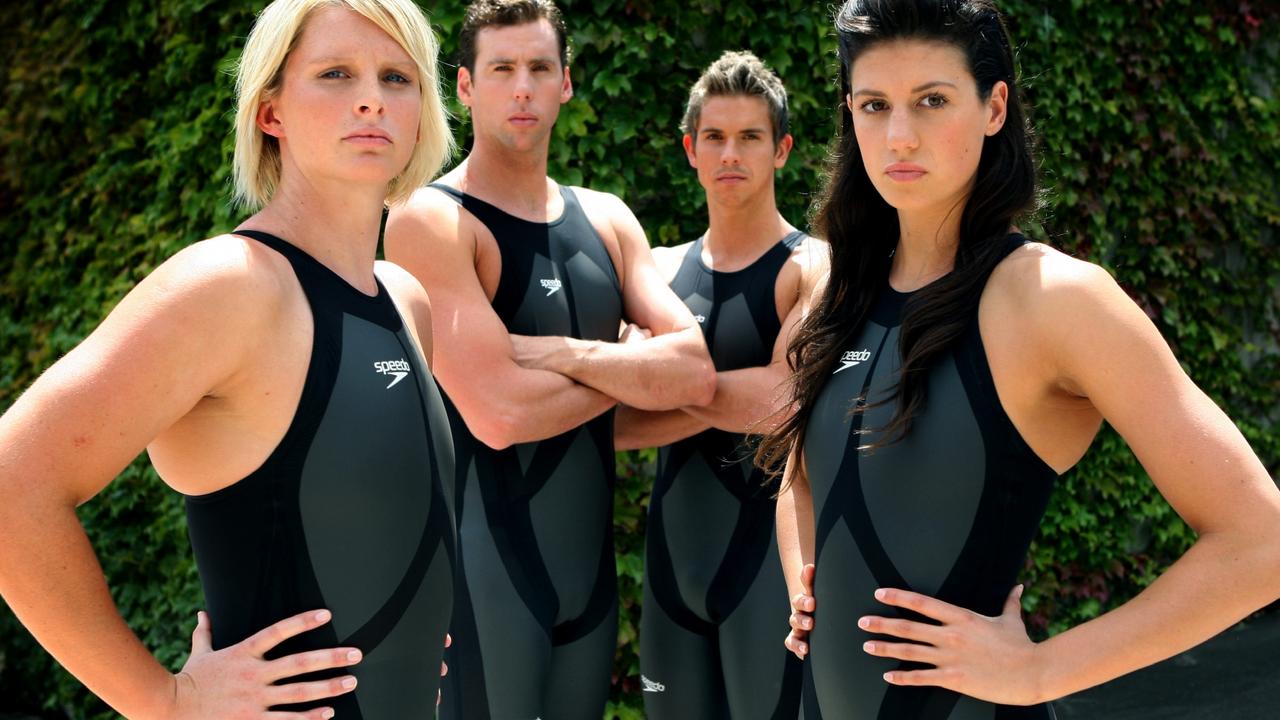
The reference to swimming could be in relation to the infamous “shark suits” worn by team Australia, along with many other nations, in the pool at the Beijing Olympics.
Officially called the LZR Racer and unveiled by Speedo in 2008, the body suits were made of body hugging elastane-nylon and polyurethane. It was claimed they could reduce drag in the water by as much as 24 per cent.
The vast majority of swimming medals won at the 2008 games were awarded to competitors wearing the sleek shark suits. By the next year, 93 world records had been broken in the pool by those shoe-horning themselves into them.
After 15 world records were smashed at the 2009 World Championships in Rome, swimming’s governing body FINA effectively banned the suit from competition.
Nike will likely find out if the Vaporfly will suffer the same fate as the shark suit on Friday.
Nike has been contacted for comment.



